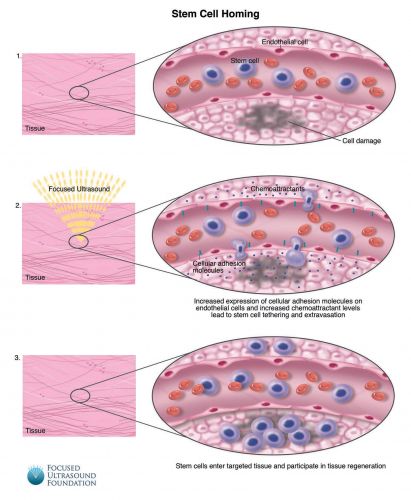Stem Cell Trafficking
Stem cells offer a versatile treatment for the repair of damaged tissue in many organs.

However, intravenously injected stem cells often have trouble getting to the target site. The mechanical effects of focused ultrasound can stimulate the release of chemoattractant molecules as well as an increased expression of cellular adhesion molecules on endothelial cells, both of which improve the ability of stem cells to extravasate into the targeted tissue. Using focused ultrasound in combination with stem cell therapy could enable these cells to more specifically home to the damaged tissue.
Preclinical work has shown that focused ultrasound induced stem cell homing can be used to treat acute kidney injury, however, there is a wide array of potential clinical applications for this mechanism. Stem cell therapy can be used in cardiovascular disorders (e.g. repair of cardiac muscle after a heart attack), neurodegenerative disorders (e.g. generation of new neurons in Parkinson’s disease), liver disease, osteoarthritis, and clinical research is investigating this approach for the treatment of peripheral artery disease. In each of these cases focused ultrasound may be able to play a role in increasing the efficacy of the treatment by enhancing stem cell homing to the target site.
Webinars:
Focused Ultrasound and Regenerative Medicine: Enhancing Homing and Retention of Stem Cells to Targeted Tissue by Joseph Frank, MD, National Institutes of Health
Click here for additional references from PubMed.
